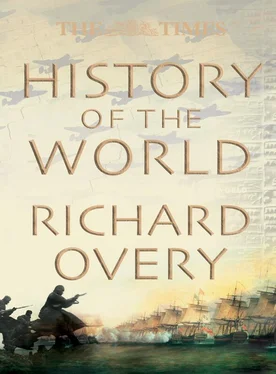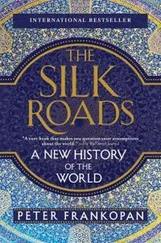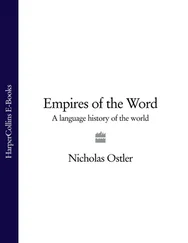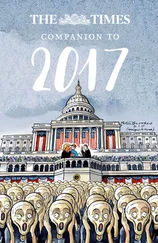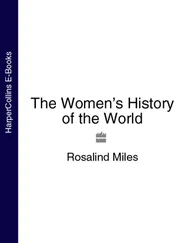Even before Alexander’s conquest, some communities within the Persian empire had adopted aspects of Greek culture. This “Hellenization” continued, at least among the elites: conflict between “Hellenizers” and “traditionalists” in the 2nd century led to violence in Jerusalem. However, especially in Seleucid territories, elements of older cultures, including cuneiform writing, remained important, and in those areas which were to become the Parthian empire ( see p. 57), Greek culture was never firmly established.
There were advances in geometry and mathematics, especially with Euclid of Alexandria and Archimedes. The great Alexandrian librarian, Eratosthenes of Cyrene, attempted with some success to calculate the circumference of the earth. However, this was not a period of great technological change. The basis of the Hellenistic economy was agriculture, and this changed little. Merchants continued to trade, and writers of the time praise the range of goods available in the great cities, but there is evidence too of an increasing gulf between rich and poor. Only in warfare were there major developments, with the creation of ever more advanced artillery and siege engines, and the introduction by the Seleucids and the Ptolemies of elephants onto the battlefield.
From the late 3rd century, a new player entered the game. Threats to Roman operations in the Adriatic, and Macedonian support for the Carthaginian Hannibal, led to a Roman invasion of Greece and Asia Minor. The Macedonian phalanx proved inferior to the Roman legions.
THE GROWTH OF ROMAN POWER
Wars gave Roman commanders an opportunity for booty and glory, and initially they withdrew their forces after each campaign; but as Rome acquired more allies in the east, the reasons for maintaining their presence grew. After the battle of Pydna (168) the kingdom of Macedon was divided into four independent republics. 18 years later it was made a Roman province. The involvement of Cleopatra VII in the civil war between Mark Antony and the future emperor Augustus led after the battle of Actium ( see p. 75) to the Roman annexation of Egypt, the last major successor kingdom. A few small client kingdoms, tolerated by the Romans for a while, were all that remained of Alexander’s territorial inheritance.
475 BC TO AD 220
THE UNIFICATION OF CHINA
The process of China’s nation- and empire-building began with the political anarchy of the Warring States period but ended with a highly centralized state headed by a single monarch and an efficient bureaucracy that reached village level. The new system attained its full glory under the Han, whose wealth and territory matched the Roman empire.
Throughout the Warring States period (475–221 BC) seven major rivals contended for supremacy. At first, following the decline of the power of the Chou king, the principal contenders were the old-established dukedoms of Ch’i, Ch’u, Han and Wei. But from the beginning of the 3rd century BC the border state of Ch’in established firm control over the northwest and west, adopting the title “king” in 325 BC, and during the latter half of the 3rd century BC it began gradually destroying its rivals.
Throughout China, it was a period of constant warfare, waged on a massive scale by powerful and well-organized political units. But at the same time, this Warring States period coincided with major economic and social changes. The introduction of iron tools from about 500 BC and the use of animal power for cultivation greatly increased agricultural productivity. Population multiplied, commerce and industry flourished and large cities emerged. It was also a period of innovation in technology and science, and of philosophical ferment, in which the main schools of thought—Confucianism, Daoism and Legalism—took shape.
That the Ch’in emerged from this period to unify China under their leadership was at least in part due to the success of the “Legalist” system adopted by them in the 4th century, whereby a universal code of rewards and punishments was established that induced a high level of popular obedience and military discipline. Under this system, a centralized bureaucracy took measures to improve the production and distribution of grain, and organized the population to provide manpower for construction works and for the army, enforcing the system through a ruthless penal code.
THE FIRST EMPEROR
When the Ch’in king, Shih Huang-ti, was crowned the first emperor of China in 221 BC, the “Legalist” institutions were extended throughout the country. But although the emperor tried to eliminate all hostile factions, under the burdens imposed on the people by his military campaigns and vast construction works, his dynasty collapsed in a nationwide rebellion in 206 BC, shortly after his death.
After a period of civil war a new dynasty, the Han, was established by Liu Pang (256–195 BC). Copying the general outlines of the Ch’in system, but softening its harshness and in part restoring a system of feudal principalities, the Han gradually evolved an effective central government and system of local administration. The “Legalist” approach was replaced by Confucianism which emphasized benevolent rule and good statesmanship.
HAN EXPANSION
The Ch’in had taken strong defensive measures against the nomad Hsiungnu (Huns) in the north. Under the emperor Wu-ti (140–87 BC), though probably driven by his generals in the north, Han China again took the offensive against the Hsiungnu, and opened up the route to central Asia known as the Silk Road. A large export trade, mainly in silk, reached as far as the Roman empire. The Han also reaffirmed the Ch’in conquests in the southern region, eliminated the Yüeh kingdoms of the southeast coast, and occupied northern Vietnam. Chinese armies also drove deep into the southwest, seeking to establish Han control. In addition, Wu-ti’s armies placed parts of northern Korea under Chinese administration.
The Han empire grew extremely prosperous and China’s population reached some 57 million. Many large cities grew up and the largest, the capital Ch’ang-an, housed a population of a quarter of a million and was the centre of a brilliant culture. At the beginning of the Christian era the Han empire rivalled that of Rome in size and wealth.
But under a series of weak emperors during the latter half of the 1st century BC, the authority of the throne was challenged by powerful court families. In AD 9 Wang Mang usurped the throne. His reign (the Hsin dynasty, AD 9–23) ended in a widespread rebellion that restored the Han (Later Han, AD 25–220), and the capital was moved to Lo-yang.
THE COLLAPSE OF THE HAN EMPIRE
After some decades of consolidation, in the late 1st century the Chinese resumed active hostilities to drive the Hsiungnu westward to central Asia. But trouble with the Chiang tribes of the northwest and virulent factionalism at court had seriously weakened the Han state by AD 160. A wave of agrarian distress culminated in 184 in a massive uprising led by the “Yellow Turbans”, a religious movement based on popular cults. Although the Han survived in name until 220, power now lay with regional commanders. In 220 the empire was divided into three independent kingdoms, ushering in a long period of territorial fragmentation.
220 TO 618
CHINA AND EAST ASIA
The period after 220 was one of the most chaotic and bloody in Chinese history. Not only was the north lost for long periods to non-Chinese regimes, but the governments in the south often lost effective control as well. Political instability was the norm across the country, and economic growth was minimal until the advent of the Sui dynasty.
The Han empire broke up into three kingdoms in 220: the Wei in the north; the Wu in the south; and the Shu in the west. The militarily strong Wei had conquered the Shu in the southwest by 263, but in 265 a military family, the Ssu-uma, took over the Wei kingdom through a coup d’état. They then proceeded with a series of military campaigns to unify China under the name of the Western Chin dynasty. The target of unification was finally achieved in 280.
Читать дальше
